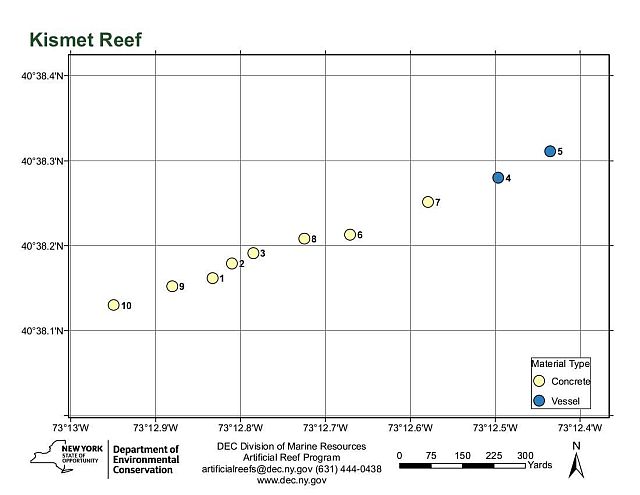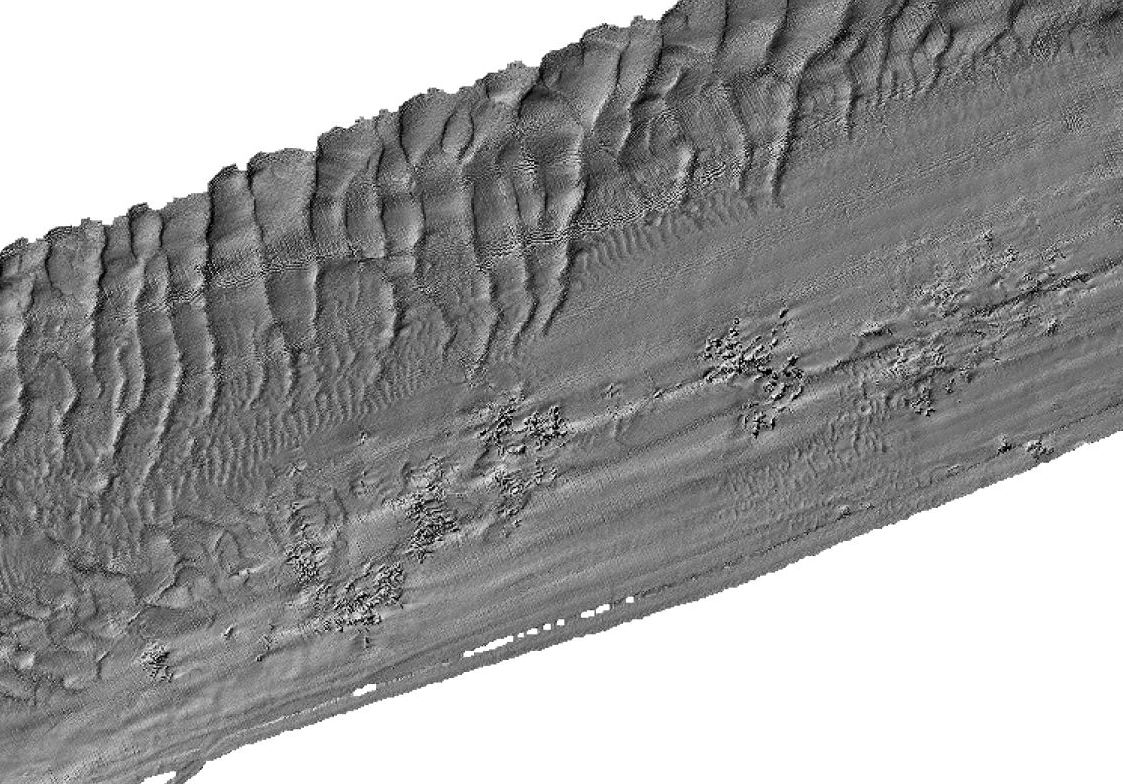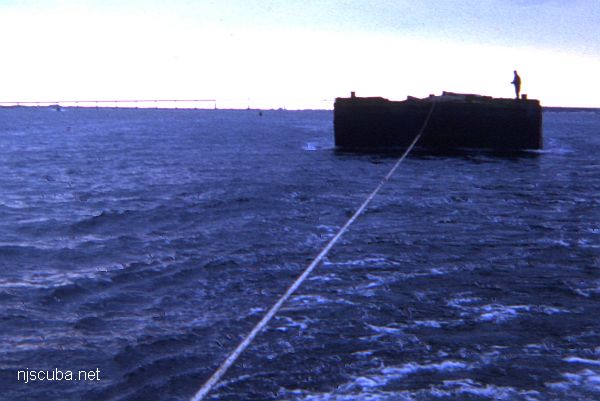Kismet Artificial Reef
Depth: 16 - 25 ft
120 yards north of South Beach, between Kismet and National Seashore dock
This reef is very close to land, it could even be a shore dive

Details:
Named for the nearby hamlet of Kismet on Fire Island. I didn't know that, anyway.
Reef site coordinates differ from NOAA Navigational Charts.
Not Shown:
- 1,000 tire units





